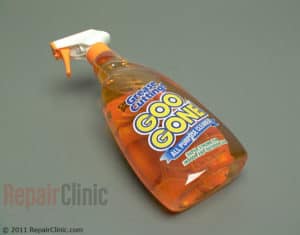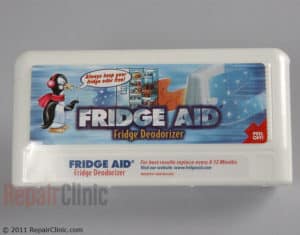If you have a standalone, chest or upright freezer, odds are that you haven’t spent as much time getting to know it as you have other appliances.
To save money, reduce energy consumption and extend the life of your freezer, check out our popular How it Works: Freezer video to learn how chest and upright freezers work:
Here are maintenance and care tips to maximize efficiency and keep your chest freezer or upright freezer running well:
- Check the temperature: Periodically check the freezer thermostat to ensure that your freezer is set at zero degrees Fahrenheit (-18 degrees Celsius). If your model does not have a thermostat, use a thermometer to check the temperature. Adjust the freezer control as needed.
- Clean: Periodically clean the interior using a damp rag and a small amount of dish detergent. For spills and stickiness in the interior and on the gasket (door seal), try a spray cleaner like Goo Gone.
You can get rid of freezer odor by using a deodorizer. We like this one – Fridge Aid – a recyclable and biodegradable, high-absorbency paper honeycomb filter. According to the manufacturer, it’s laboratory-tested to be 50 times more powerful than baking soda in absorbing powerful food odors.
- Check the door gasket (seal) for wear. The gasket keeps cool air inside of the freezer and warm air outside of it. A worn and torn gasket requires the freezer to use more energy to do its job. Fortunately, replacing a gasket is inexpensive and easy. You can find a replacement gasket specifically for your freezer model on RepairClinic.com.
Additional maintenance and care tips for chest freezers:
- Defrost. Chest freezers do not defrost automatically. Manually defrost your chest freezer every six to 12 months or whenever half an inch of frost has accumulated on the freezer walls.
How to defrost a chest freezer:
- Relocate all food from the freezer.
- Unplug the unit (or turn off the thermostat).
- After all of the frost has melted, uncover the drain plug (present in most models) and drain the water.
- When the freezer is dry, power the unit back on.
- Return the food when the freezer has reached its set operating temperature – zero degrees Fahrenheit (-18 degrees Celsius).
Additional maintenance and care tips for upright freezers:
- Clean the defrost pan: Most upright freezers have a self-defrosting feature. Every eight to 12 hours, the freezer melts frost that accumulates on the coils. The water drains into a shallow pan located at the bottom of the freezer. There’s no need to empty the pan, as the water will evaporate naturally. However, you’ll need to check and clean the pan periodically. Use warm water and dish detergent to clean the pan and prevent odors and curb mold growth, which poses a great health risk. Most models enable you to easily detach the lower grill and slide out the pan. Refer to your owner’s manual for cleaning instructions specifically for your model.
- Clean off the condenser coils and cooling fan once per year. These important components attract dust and dirt. Layers of buildup require the unit so work harder.
How to clean your freezer’s condenser coils (black, radiator-like coils):
- Unplug the freezer.
- Use a brush like this one – our favorite long-handle bristle brush – coupled with your vacuum cleaner to remove lint, dirt, pet fur and other debris from the condenser coils.
- Restore power to the freezer.
For models with condenser coils located inside of freezer walls:
Your unit may have condenser coils within a wall of the unit. Since the coils release the heat through the walls, it’s wise to position the freezer with plenty of space around it so the heat can dissipate efficiently.
Freezer not freezing? Making funny noises?
Check out RepairClinic’s free freezer troubleshooting and repair help information on our website. RepairClinic has replacement parts specifically designed for your model.
Related posts
Three ways to reduce the cost of powering your refrigerator or freezer
Learn something from this post? Please share it via the social media links to the left. Thank you!


Comments are closed.